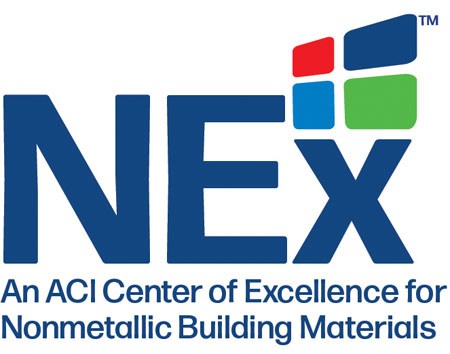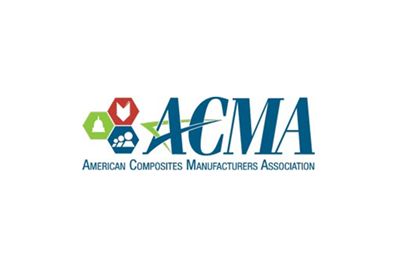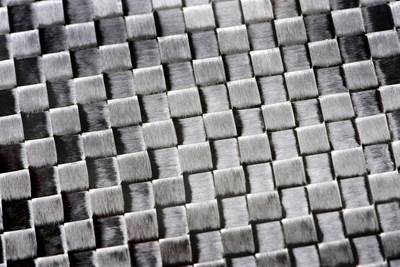Aramco, ACI launch new center to develop, promote nonmetallic material use for construction
Center of Excellence for Nonmetallic Building Materials to develop, disseminate and adopt consensus-based standards for concrete design, construction and materials.

Photo Credit: Aramco Americas, American Concrete Institute
(Houston, Tex., U.S.) and the (ACI, Farmington Hills, Mich., U.S.) announced on March 28 the launch of NEx: A Center of Excellence for Nonmetallic Building Materials to develop and promote the use of nonmetallic materials in the construction sector (see CW’s report on Saudi Aramco’s use of ACI standards to mandate FRP rebar structures in corrosive environments).
Based at ACI’s world headquarters in Michigan, NEx will focus on accelerating the use of nonmetallic materials and products in construction, leveraging ACI's role as a leading authority and resource for the development, dissemination and adoption of consensus-based standards for concrete design, construction and materials. It also plans to expand its scope to include the use of nonmetallics in other construction materials, such as composite cladding, asphalt and soil. The Center looks to draw additional partners from leading academic institutions, industries, technical societies, standard bodies, manufacturers and professionals.
“The Center's mission will be to collaborate globally on using nonmetallic materials in the built environment by driving research, education, awareness and technology adoption,” says Jeffrey W. Coleman, ACI president. “Expanding incorporation of nonmetallic materials and products in the built environment will improve sustainability, contribute to a lower carbon footprint, and enhance the durability and longevity of structures.”
Nonmetallic materials are increasingly being deployed across multiple industries, including oil and gas, construction, automotive, packaging and renewables. They offer several advantages over metallic materials, such as corrosion-resistance, reduced weight, increased durability, lower cost and improved environmental efficiency.
Aramco Senior Vice President of Technical Services Ahmad Al-Sa'adi says that Aramco has been within its own operations for more than 20 years, and offers lifecycle cost, efficiency and environmental advantages over their metal alternatives. “The potential for using nonmetallic advanced polymetric materials, however, goes way beyond the oil and gas sector and includes the building and construction industries where there is significant potential. That is why this new Center of Excellence for Nonmetallic Building Materials offers enormous and exciting opportunities,” he adds.
According to Aramco, it is already a leader in the use of nonmetallic materials in oil and gas facilities to reduce corrosion, weight and the cost of construction and operation. This initiative with ACI is part of the company's broader strategy to enter new markets, leveraging its hydrocarbon resources and technology to deliver advanced polymeric materials solutions across industries.
Similarly, over the past four decades, ACI says it has been convening the industry's brightest minds to advance nonmetallic technologies. With numerous published guides, reports and specifications on nonmetallics in concrete, including fiber-reinforced polymers and fiber-reinforced concrete, NEx will serve as a catalyst to incorporate more than 40 years of knowledge into the further acceleration of nonmetallic materials and technology.
“Our founding member, Aramco Americas, aligns with our vision to effectively meet the demands of a changing world by setting standards for the development and adoption of nonmetallic materials in building and construction,” adds Mr. Coleman. “ACI is pleased to have Aramco's support in leading this dialogue with industry stakeholders around the world.”
Related Content
Composites end markets: Sports and recreation (2025)
The use of composite materials in high-performance sporting goods continues to grow, with new advancements including thermoplastic and sustainability-focused materials and automated processes.
Read MoreLife cycle assessment in the composites industry
As companies strive to meet zero-emissions goals, evaluating a product’s carbon footprint is vital. Life cycle assessment (LCA) is one tool composites industry OEMs and Tier suppliers are using to move toward sustainability targets.
Read MoreWatch: A practical view of sustainability in composites product development
Markus Beer of Forward Engineering addresses definitions of sustainability, how to approach sustainability goals, the role of life cycle analysis (LCA) and social, environmental and governmental driving forces. Watch his “CW Tech Days: Sustainability” presentation.
Read MoreAll-recycled, needle-punched nonwoven CFRP slashes carbon footprint of Formula 2 seat
Dallara and Tenowo collaborate to produce a race-ready Formula 2 seat using recycled carbon fiber, reducing CO2 emissions by 97.5% compared to virgin materials.
Read MoreRead Next
ACMA, composites experts testify for more resilient infrastructure
Industry leaders testified to the U.S. Congress for research and use of advanced materials to combat climate change-related infrastructure damage.
Read MoreWhite House Executive Order to build supply chain resilience for carbon fiber
Commitment to comprehensively address U.S. supply chain risks highlights carbon fiber as one of four key products that will be reviewed.
Read MoreCutting 100 pounds, certification time for the X-59 nose cone
Swift Engineering used HyperX software to remove 100 pounds from 38-foot graphite/epoxy cored nose cone for X-59 supersonic aircraft.
Read More












